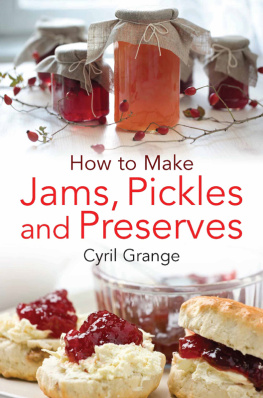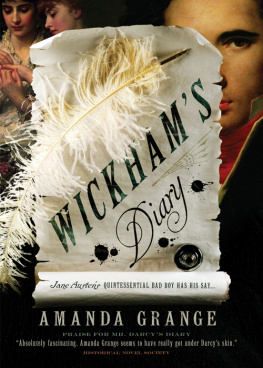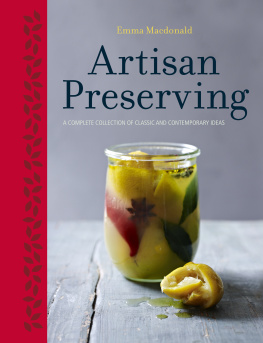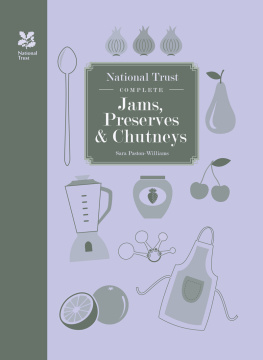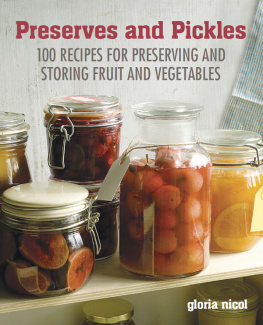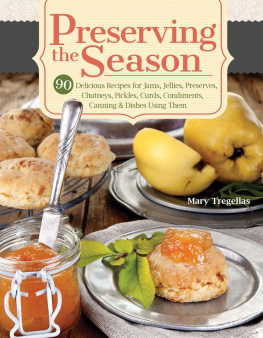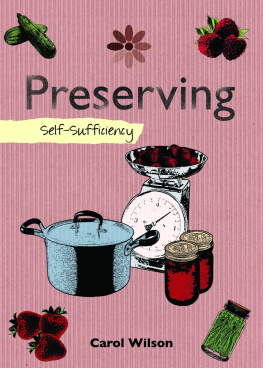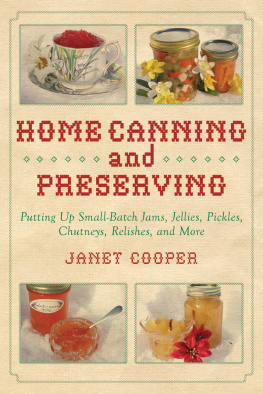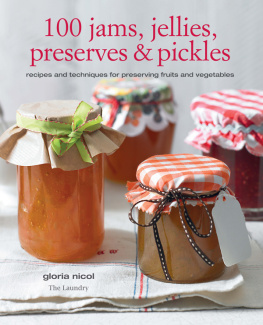HOW TO MAKE
JAMS, PICKLES
AND PRESERVES
Also available from Constable & Robinson
Southern Italian Family Cooking
Soups for Every Season
How To Make Perfect Panini
Traditional Country Preserving
Afternoon Tea
How To Make Wines at Home
How To Make Sweets and Treats
HOW TO MAKE
JAMS, PICKLES
AND PRESERVES
Cyril Grange

With many thanks to
Margaret Hanford for all her help.
Constable & Robinson Ltd
55-56 Russell Square
London WC1B 4HP
www.constablerobinson.com
First published in Great Britain in 1992 by Elliot Right Way
This paperback edition published in 2014 by Robinson
Copyright Elliot Right Way, 1992
The moral right of the author has been asserted.
All rights reserved.
No part of this publication may be reproduced, stored in a retrieval system, or transmitted, in any form, or by any means, without the prior permission in writing of the publisher, nor be otherwise circulated in any form of binding or cover other than that in which it is published and without a similar condition including this condition being imposed on the subsequent purchaser.
A CIP catalogue record for this book
is available from the British Library.
ISBN978-0-7160-2384-5 (paperback)
ISBN: 978-0-7160-2385-2 (ebook)
Typeset in Adobe Garamond by Basement Press, Glaisdale
Printed and bound in Great Britain
An Hachette UK Company
www.hachette.co.uk
CONTENTS
PART ONE
JAMS, JELLIES, CONSERVES, MARMALADES AND CURDS
PART TWO
PICKLES, CHUTNEYS, SAUCES AND KETCHUPS
INTRODUCTION
Our ancestors successfully made, by rule of thumb, vast quantities of jams and preserves to save money, provide winter food and preserve home-grown garden and wild produce.
Scientific research gave us valuable practical information which ensured safe storage, provided superior products, and avoided failures.
In recent years an awakened desire to make jams from home-grown, pick-your-own or cheaply-bought produce has become apparent, mainly because of the high and increasing cost of commercial jams, the desire for organic products and, in some instances, the poor quality.
The making of jams at home is simple, successful, economical and money-saving. It provides a delicious food which is health-giving, energy-making, nutritious, appetite-boosting, and useful for many culinary purposes as a sweetspread, on bread and butter or on toast, in sandwiches, scones, and for puddings, pies, cakes and many other purposes such as fillings, sauces, icing there is no end.
Equally valuable are the money-saving preserves of jellies, conserves, butters, cheeses, marmalades, curds, pickles, chutneys and ketchups.
The recipes given here are formulated from much research and experimentation in the authors kitchen; from recipes of proven value from skilled housewives over many years; and from scientific investigation at home and abroad.
When this book was originally written, imperial measurements were used. In this revised edition, the approximate metric equivalents have been added. Always follow one set of measurements only, never mix metric and imperial.
PART ONE
JAMS, JELLIES, CONSERVES, MARMALADES AND CURDS
1
JARS, COVERS
AND EQUIPMENT
The choice of jar, the type of cover and the method of covering is most important.
The most important action is to seal down before mould, yeasts and germs have had time to get in and then to ensure complete and safe protection with a long-lasting, airtight cover which effectively prevents evaporation, fermentation, desiccation and general deterioration while in storage.
The commercial processor exhausts the jar after filling, and then fits a completely airtight screw or half-turn metal or plastic cover which keeps the product thoroughly appetizing even after fairly long storage under widely varying and often unsuitable conditions.
It pays to buy the jars and fittings with screw or clip-on or half-turn caps and, after use, keep them carefully for next time.
JARS AND TOPS
GLASS CAP, SCREW BAND
This is the old-style Kilner type jar from 225g ( lb) upward which has a glass top and a screw band. It can be used for all types of processed foods including pickles and chutneys. The contents touch only glass.
SCREW CAP
This follows the common commercial pattern and has a ceresin or plastic lining or ring and a metal screw cap.
TWIST TOP
See and Fig. 1, below.
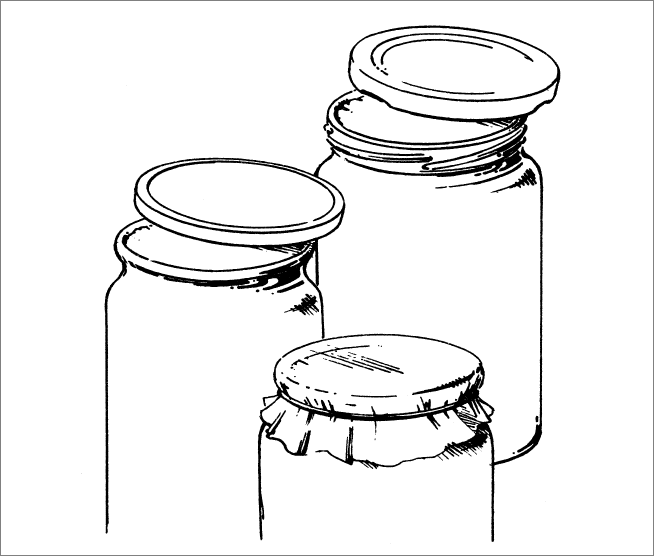
Fig. 1. Three types of covers for jam.
Back: A twist top. This guarantees a long-lasting seal, and is the most reliable for centrally heated homes, or where storage space is near a heat source.
Middle: A plastic top.
Front: A waxed disc covered with a transparent cellophane cover.
As a final touch, carefully wash and dry each jar before labelling. For show purposes, methylated spirit gives the outside of the jar sparkle.
THE HALF-TURN CAP OR SNAP-DOWN CAP
Usually of stiff plastic, it is efficient provided that it makes a complete seal when snapped down. (All types do not succeed in giving an airtight seal because of sizing, so be careful to check this when buying.)
Plastic tops (see ) placed on very hot jars form a complete seal and become concave on cooling, and so do not need a wax disc placed on top of the preserve.
GLASS JAM JARS
A wax disc forms a seal on the surface of the jam and is placed on the top of the jar as soon as the jar is completely filled; either immediately or after the jam is cool, the top is cleaned and cellophane, parchment or cling film is placed on the jar to form a dust cover.
HONEY JARS
These are not recommended, as a pocket of stale air can be trapped between the screw top and wax disc, leading to spoilage by mould growth.
COVERS AND SEALS
Covers for jams, jellies and marmalades can be the breathing type which consists of a moisture- and vapour-proof disc of waxed tissue. This is the actual seal and should be the correct size to cover the surface of the jam completely but not adhere to the sides of the jar. The outer dust cover, usually transparent cellophane, should be put on when the preserve is either hot or cold, never when it is tepid or lukewarm, as moist air may cool and deposit moisture on the waxed disc, and this could possibly lead to spoilage during storage.
These waxed discs and dust covers (see ) are the most popular method of sealing jams, jellies, marmalades and curds, and are generally sold in packets complete with rubber bands and labels. Cling film may be used as an outer dust cover for sugar preserves, and is best used double thickness. These covers are satisfactory in a clean, dry, cool and preferably dark storage cupboard for anything up to nine to twelve months. However, they are not wasp- or mouse-proof, and excessive heat, such as storage near a radiator, will cause shrinkage in the preserve.
Most commercial jams have a sealing lid of plastic-coated or lacquered metal. Somewhat similar twist tops are available for home use. These are widely used and can be bought from hardware shops and online. As with plastic tops, a wax disc is not needed on top of the preserve.
Next page
